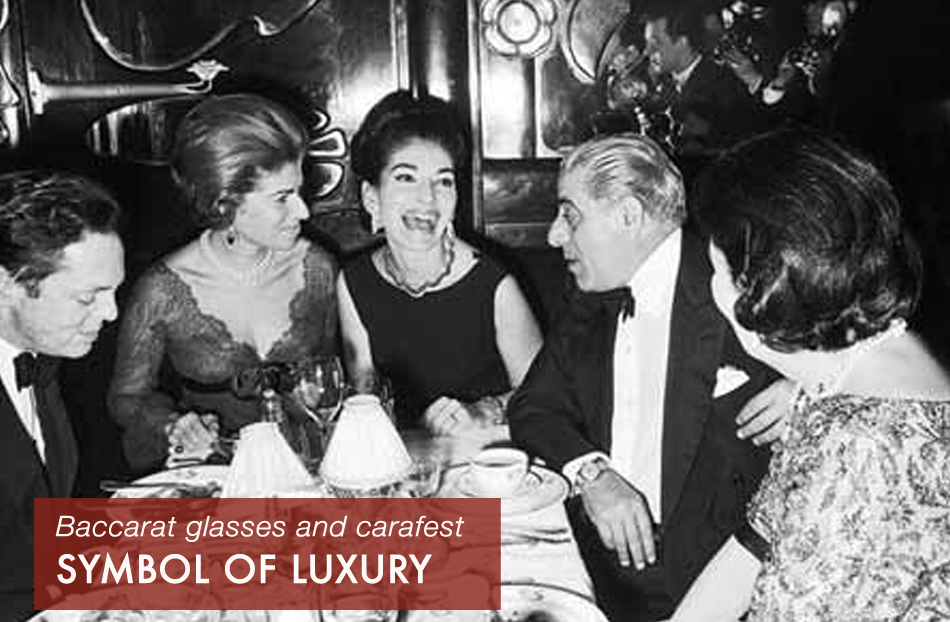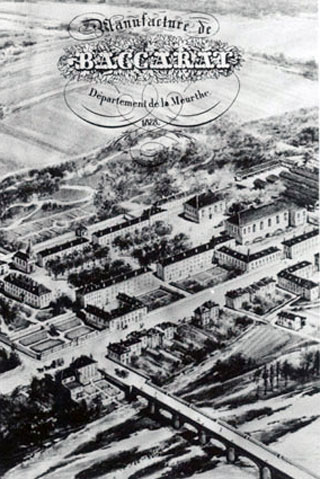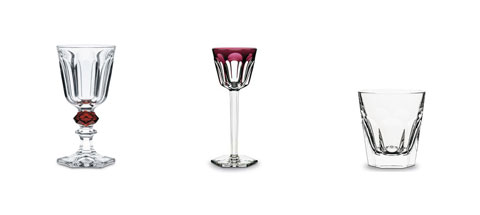

Baccarat production plant, 1828
Baccarat, Pieces from the Harcourt 1841 collection, 2014
Top: Baccarat glasses at the table of Maria Callas and Aristotele Onassis, c. 1960
In 1764, around a century after the discovery of lead crystal in England, the production of this fine glassware got underway in the Lorraine, in eastern France. A large glassworks was established in the village of Baccarat, by concession of King Louis XV, and glass is still produced there today.
In the 19th century the Baccarat factory produced its most iconic piece: the Harcourt 1841 glass, which entered into production after being commissioned directly by the King of France, Louis-Philippe. This noble client ordered a transparent blown crystal glass embellished by a ruby-coloured node and made unique by the engraving of his monogram on the chalice.
Still part of the Baccarat range today, the Harcourt 1841 line has been interpreted in various ways over the years: the wine carafe with its classic gilded decoration, the wine glass with its slender stem crowned by coloured crystal and the sober stemless glass.

